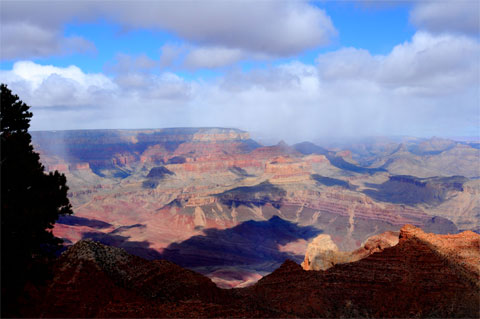
A National Park Service (NPS) proposal that includes raising the upper boundary of flight-free zones over the Grand Canyon National Park would not reduce noise or provide other environmental benefits, but would “degrade” general aviation access and safety, AOPA and the National Business Aviation Association said in a joint response to the plan.
The two associations filed joint comments June 14 with the NPS on its draft environmental impact statement (DEIS) that offers four alternatives—including an NPS preferred alternative—for managing aircraft overflight activity and restoring natural quiet to the park. With modifications, the preferred alternative would work as intended, the associations said.
AOPA reported Feb. 3 that the NPS-preferred alternative emerged from years of cooperative efforts by the Grand Canyon Working Group, in which AOPA participated. The group’s task was to assist the NPS and the FAA in developing a range of alternatives to restore natural quiet in the park.
The preferred alternative would maintain the existing four GA corridors for transiting the park—but would raise the ceiling of flight-free zones above the park to 17,999 feet msl. The NPS described it as the alternative giving the best balance between resource protection and a “wide range of beneficial uses of the environment” without undesirable consequences.
“Based on the alternatives discussed in the DEIS, the NPS preferred alternative with modifications would allow continued necessary general aviation access within the Grand Canyon Special Flight Rules Area,” wrote Heidi Williams, AOPA senior director of airspace and modernization, and Robert G. Lamond Jr., NBAA director of air traffic service and infrastructure, in joint comments.
“However, we take exception with raising the upper boundary of all flight free zones from 8,000 or 14,500 mean sea level (msl) to 18,000 feet msl based on the impacts to transient operations and the lack of evidence that additional natural quiet or environmental restoration would be achieved.”
The existing flight-free areas, and corridors, sectors and altitudes established for use by tour overflights have already “greatly served to reduce low altitude general aviation and air tour noise and restore natural quiet” in the park, they wrote.
“Arguably, the proposed change in flight free zone boundaries serves only to degrade general aviation access and safety when operating in the GCNP by eliminating routing and altitude options that currently do not impact the GCNP soundscape,” they said.
Members of the associations are encouraged to comment by June 20 on the impact of the NPS’s preferred alternative on pilots’ access to the park. The DEIS can be viewed online and comments can be submitted.
Although it is preferred that comments be submitted online, submissions also can be sent by mail to: Superintendent, Attn: Office of Planning and Compliance, P.O. Box 129, Grand Canyon, AZ 86023.
“The ability to transit the Grand Canyon National Park in an aircraft is an ideal way to partake of this national treasure,” Williams said. “Members have fought hard to maintain access to this unique landmark.”



